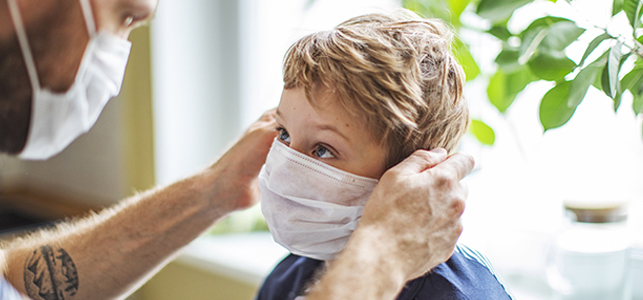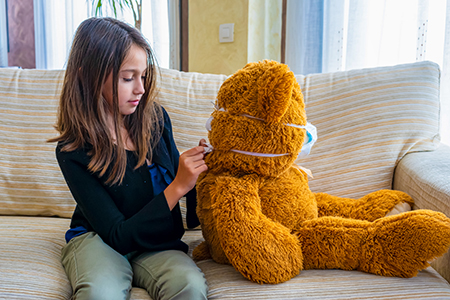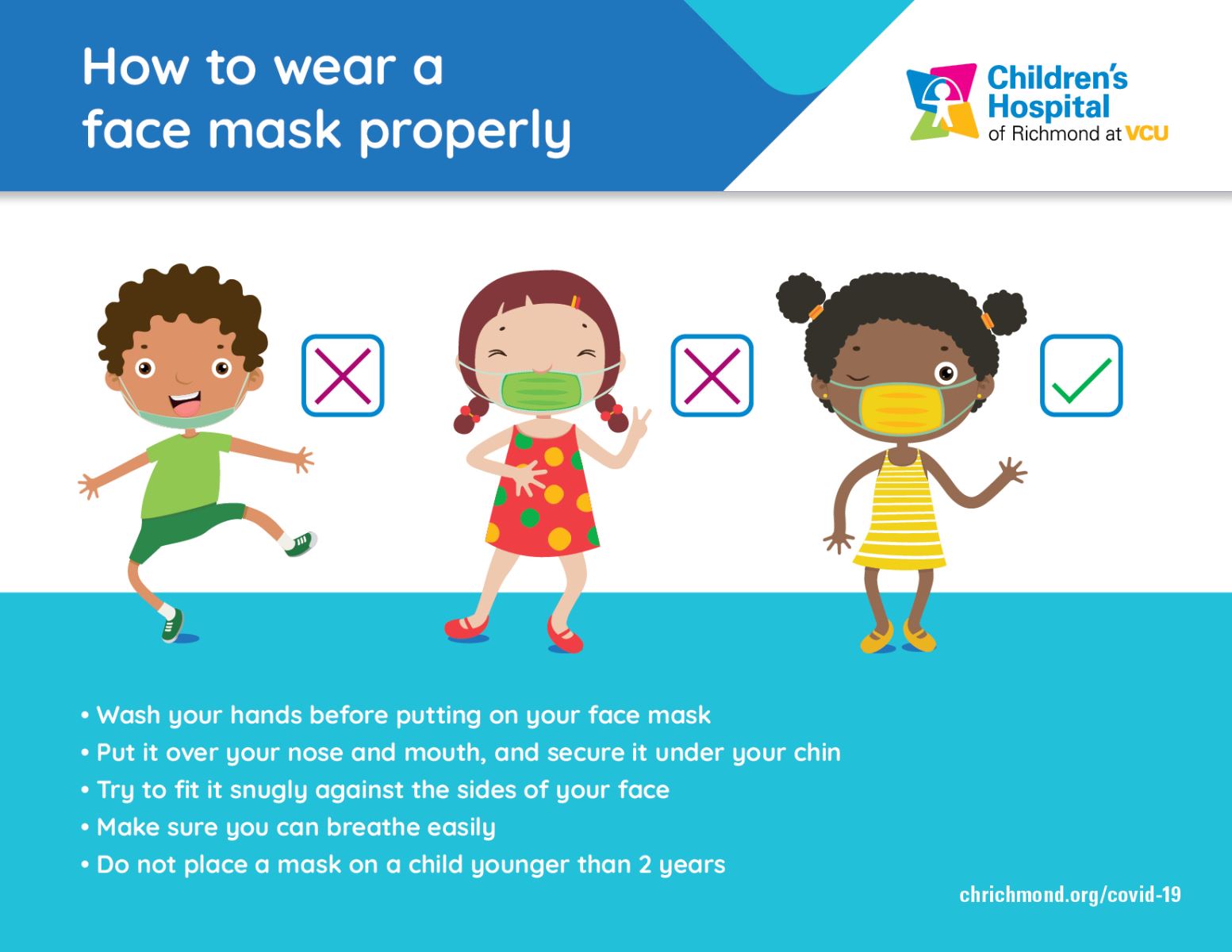
Tips for helping your child with special needs wear face masks
Communities and public venues are slowly beginning to re-open. As more people are out and about, wearing a face mask to protect everyone is more important than ever. But, what about kids with special needs who may be reluctant?
“Masks are unfamiliar and can be scary to some children,” says Michelle Aiello, speech-language pathologist at our Brook Road Campus. “It’s important and possible, with time and creativity, to teach your child with special needs to wear a face mask so they can safely re-engage with community activities.”
How can parents and caregivers help the mask-wearing process go more smoothly?
Many children with special needs may not be able to effectively communicate their fears, confusion or frustration related to masks. Michelle and occupational therapist Jessica Lynn offer the following tips to help introduce and encourage wearing a mask.
Educate
 Talk about COVID-19 and why face masks are important. By now, your child has probably experienced disrupted routines and other changes associated with the coronavirus.
Talk about COVID-19 and why face masks are important. By now, your child has probably experienced disrupted routines and other changes associated with the coronavirus.
You could say something along the lines of, “This virus is making a lot of people sick, so doctors are saying it’s best to wear a mask when we’re around other people. The mask helps keep your body safe. We won’t always have to wear a mask when we go to our therapy appointments or to the grocery store, but right now it’s really important.”
It can be helpful to provide kids with a visual timer to help them understand how long they have to wear the mask – such as, until you get outside the building, until you get into the car, or until you get home. This way they’ll know what to expect and can anticipate being able to remove their mask.
Model
Let your child physically explore the mask over a period of time. Give them a chance to feel it, get used to it and even place it on a doll, stuffed animal, or you.
It’s often helpful for a parent, sibling or caregiver to model wearing a face mask appropriately. This can make the process more familiar and less scary when it comes time for them to wear it themselves. Ask friends, extended family members, therapists or others you anticipate seeing in a mask to send you a picture of them wearing it in advance so your child will know what to expect.
Make it fun
Kids with special needs may be particularly hesitant to wear masks if they have sensory aversions to the material around their faces. Select a fabric that is soft and breathable. Avoid scratchy materials or those that trap heat. Cloth masks can be purchased or made at home from common materials. Make it exciting by choosing a fabric with your child’s favorite color, animal or sports team!
If you’re using disposable masks, decorate them together with markers, stickers or silly faces.
Have at least two masks, preferably with different materials and colors/patterns, and allow your child to choose which they’d like to wear. Most kids love to make independent decisions and this may help them feel more invested and willing to wear the selected mask.
Practice
Break the process into steps to help your child become familiar with their mask. Have your child work on one task at a time and gradually move to the next as they’re comfortable. These steps may require multiple attempts, and that’s OK! Start several days, or even weeks if possible, before they’ll need to wear the mask.
- Hold the mask
- Bring it near their face
- Stretch the elastic ear loops or ties
- Independently place the mask on their face or allow a caregiver to do so
- Wear it for short durations, increasing gradually as they can tolerate it
Incentivize
Celebrate mastering each step with a motivator, like cheers, high-fives, thumbs-up or playing a favorite song. Preferably, the motivator can be something that is specific to celebrating milestones related to the mask – not a reward that occurs on a regular basis.
Safety comes first
It may be harder for children with special needs to understand and maintain social distancing guidelines. They may also be less likely to wash their hands regularly and thoroughly unless prompted to do so. For these reasons, wearing a mask may be a particularly important protection measure for them.
*Masks should not be placed on children younger than 2 or those who are unable to take the mask off themselves or communicate to a caregiver that they need it to be removed. If your child has breathing difficulties, be sure to check with their doctor to determine if it is safe and appropriate for them to wear a mask.
Download our face mask infographic


.jpg)